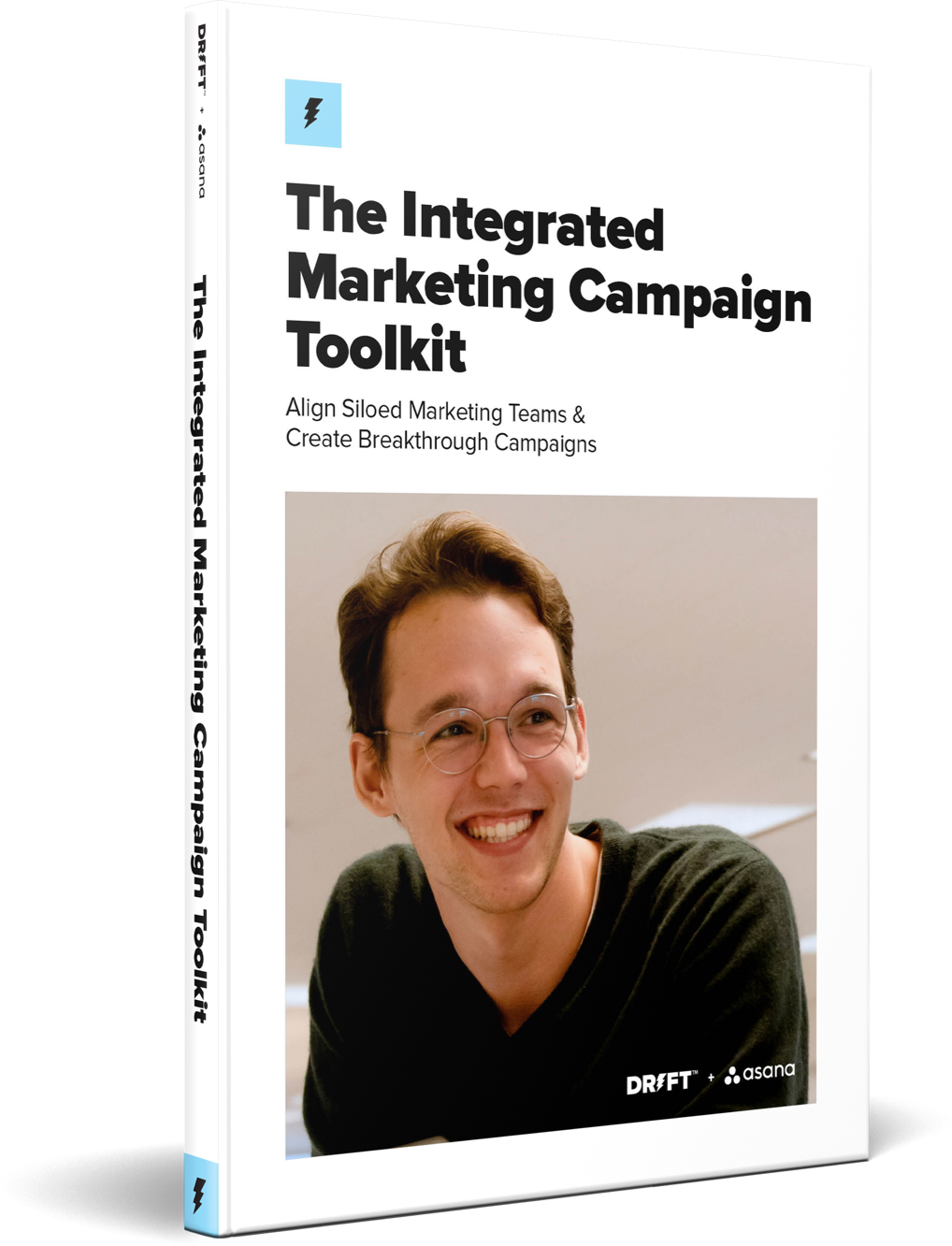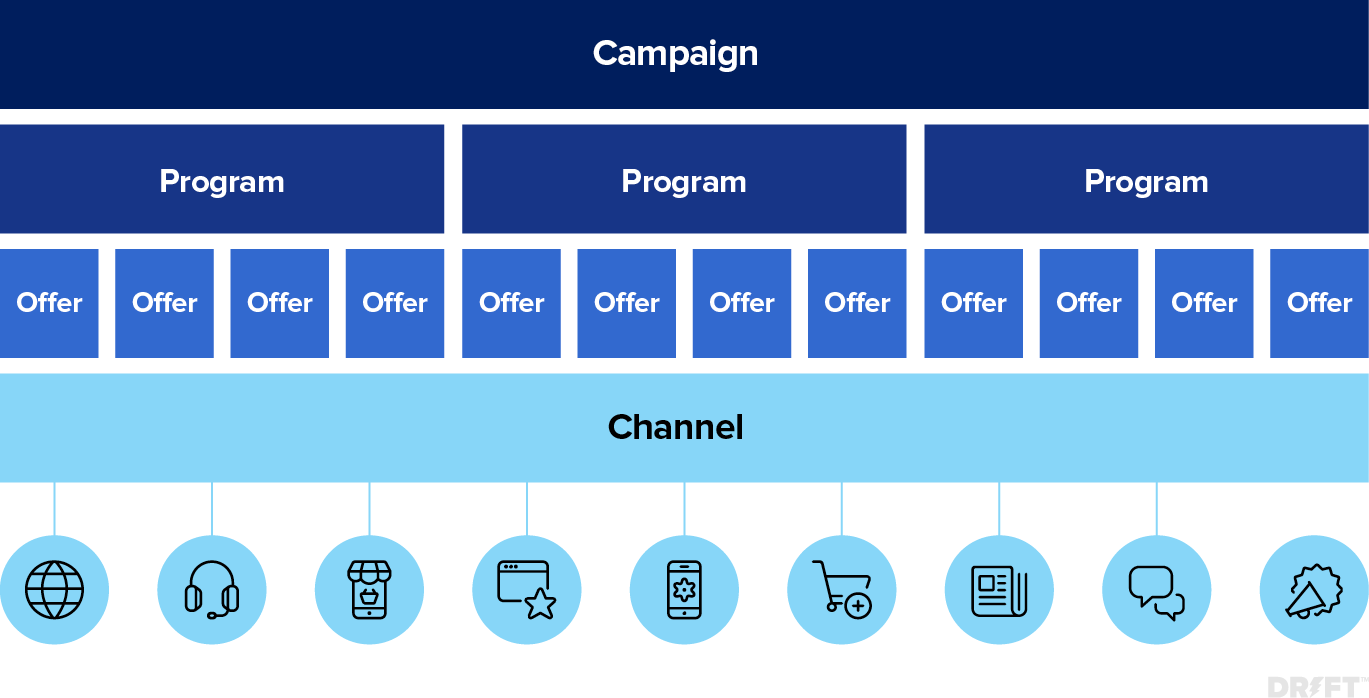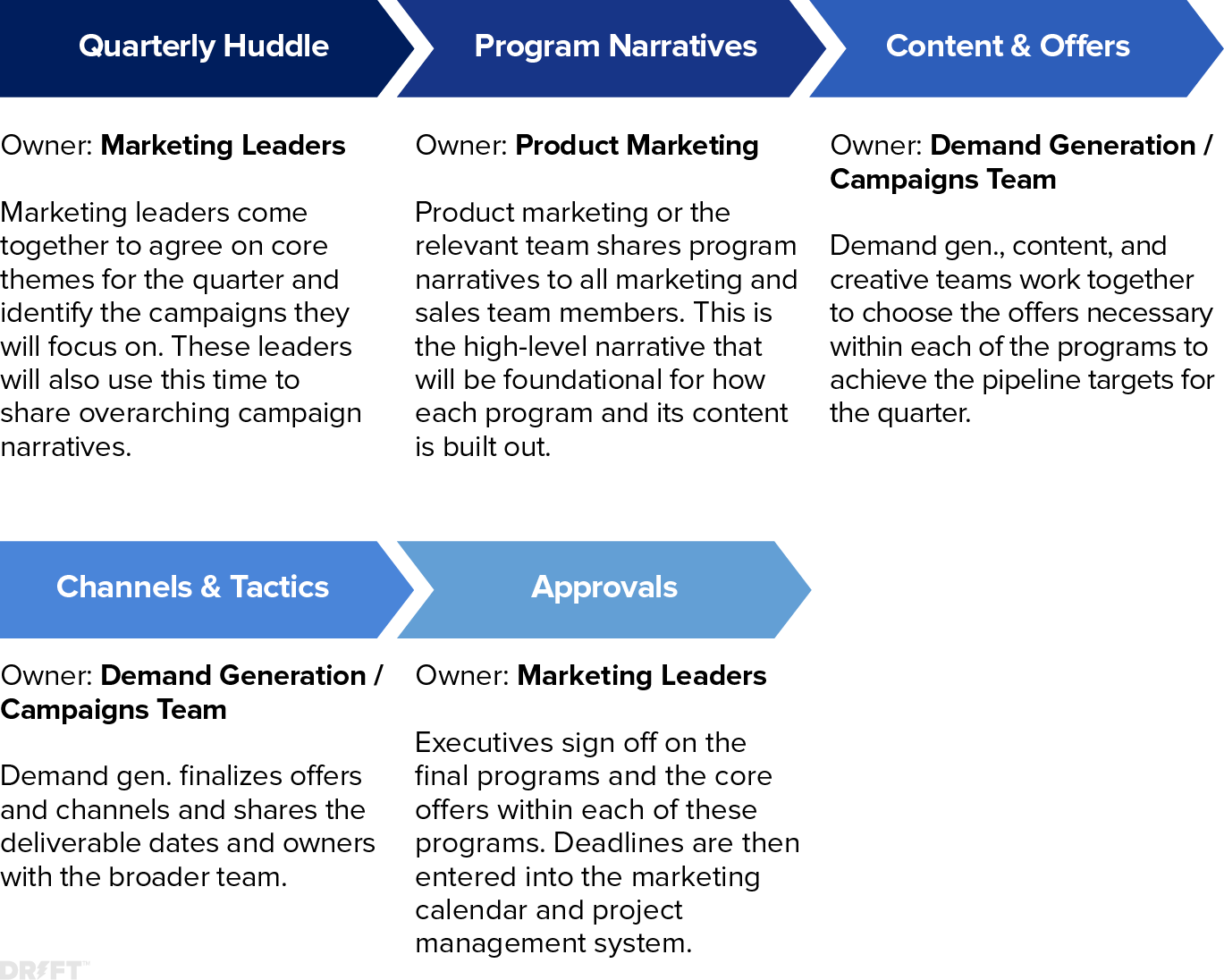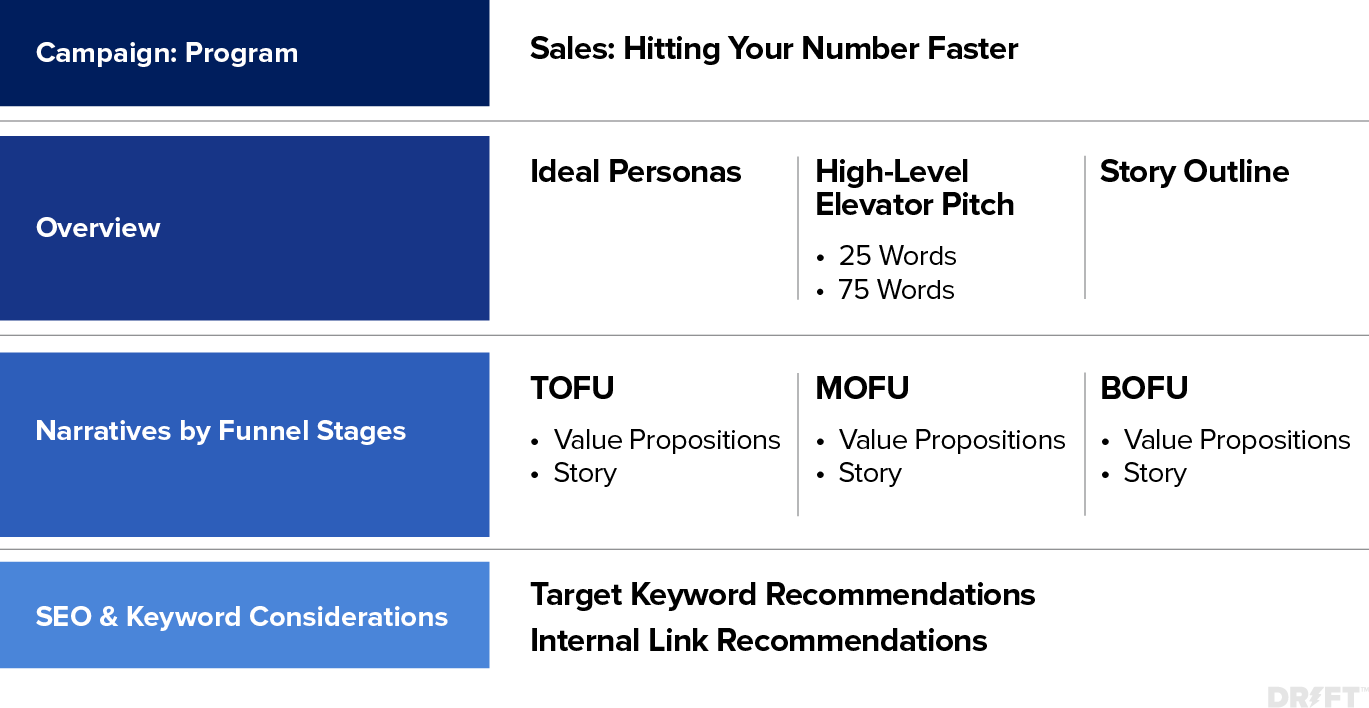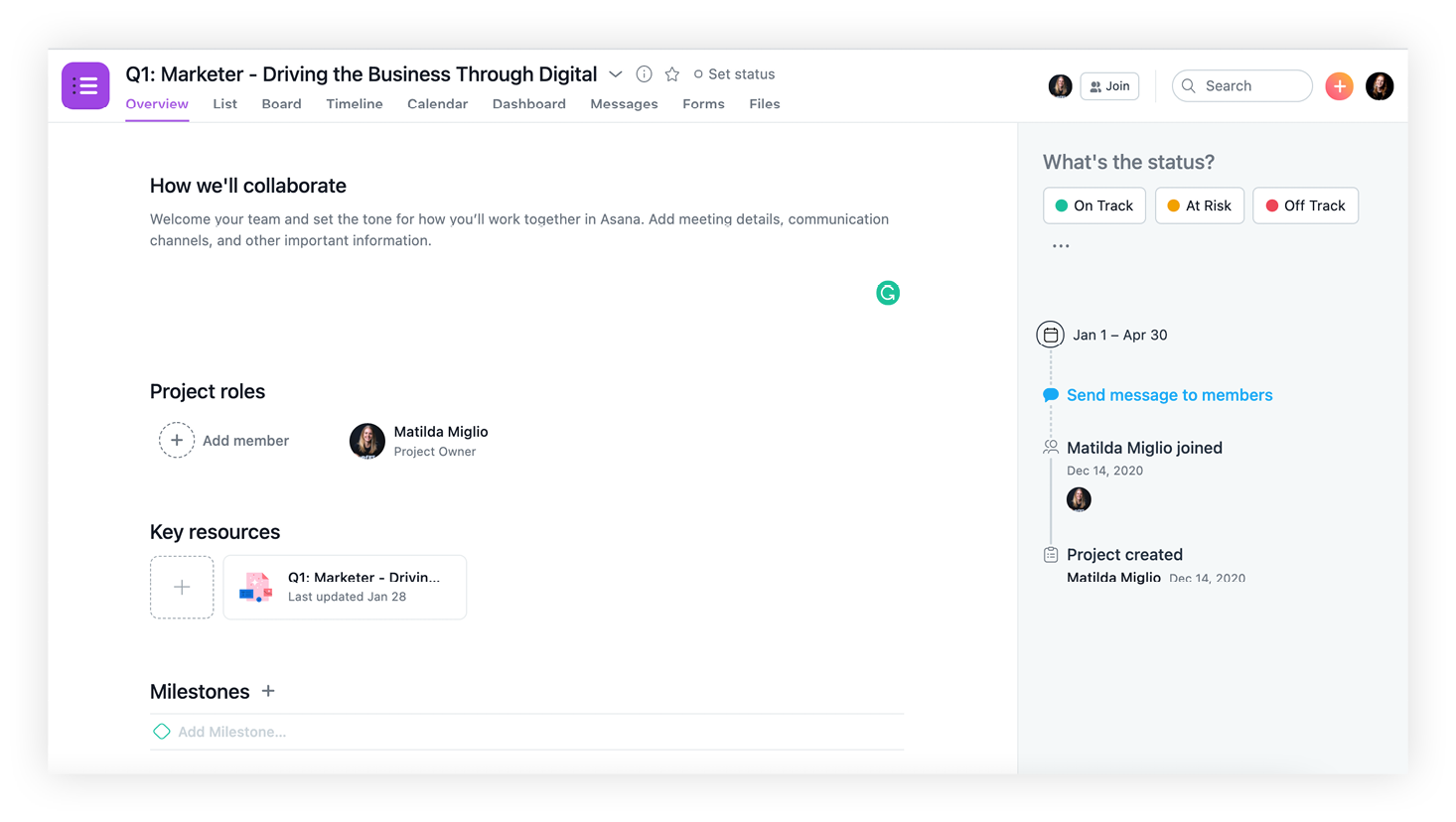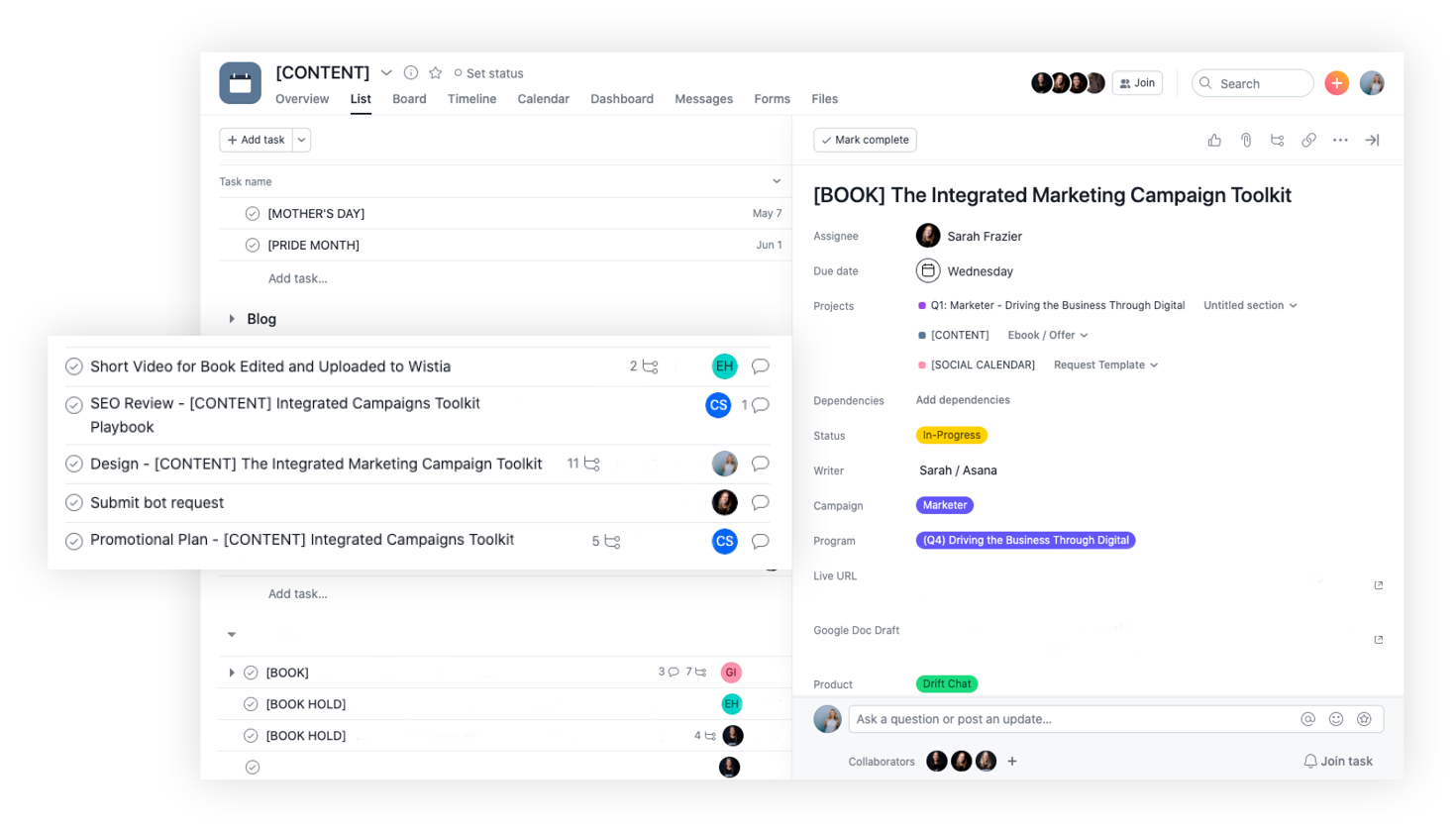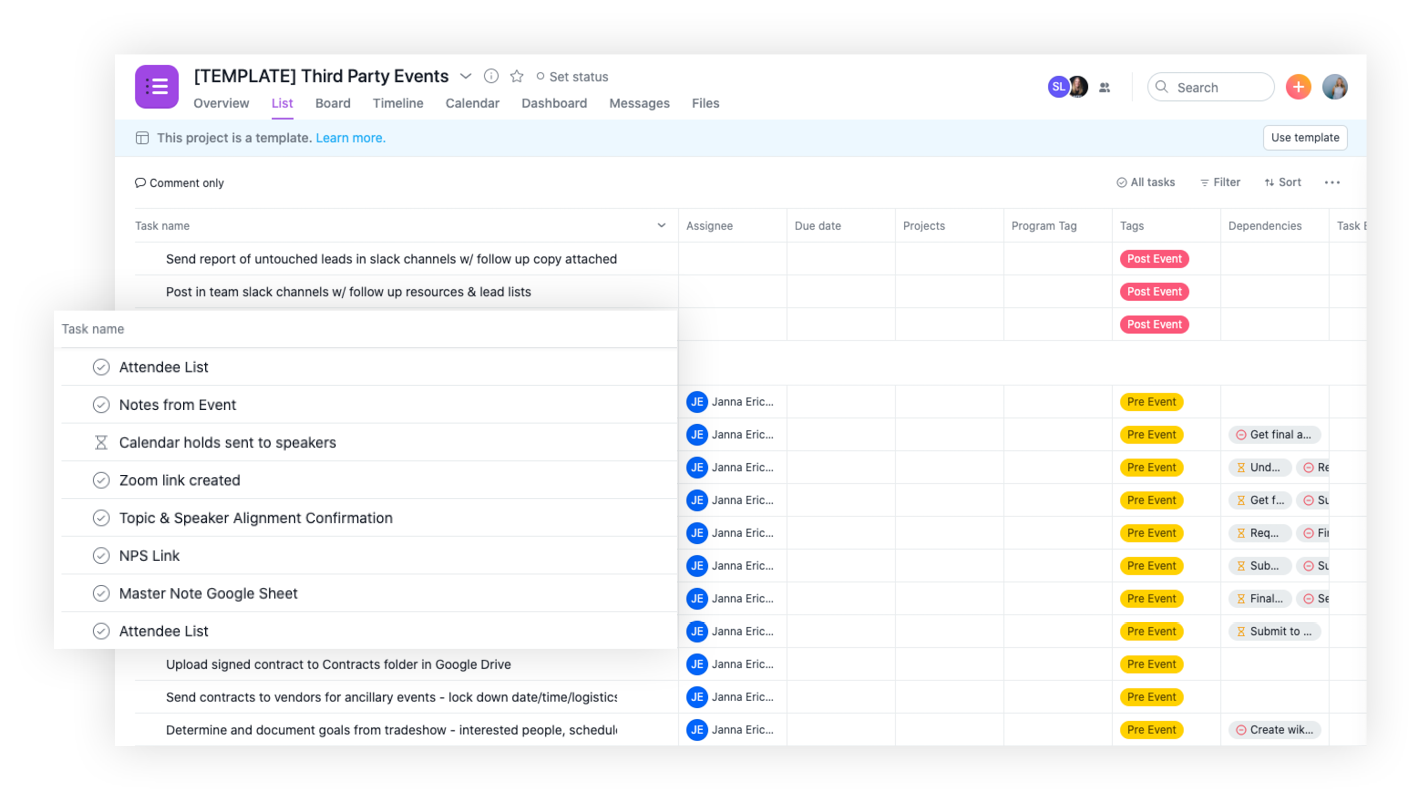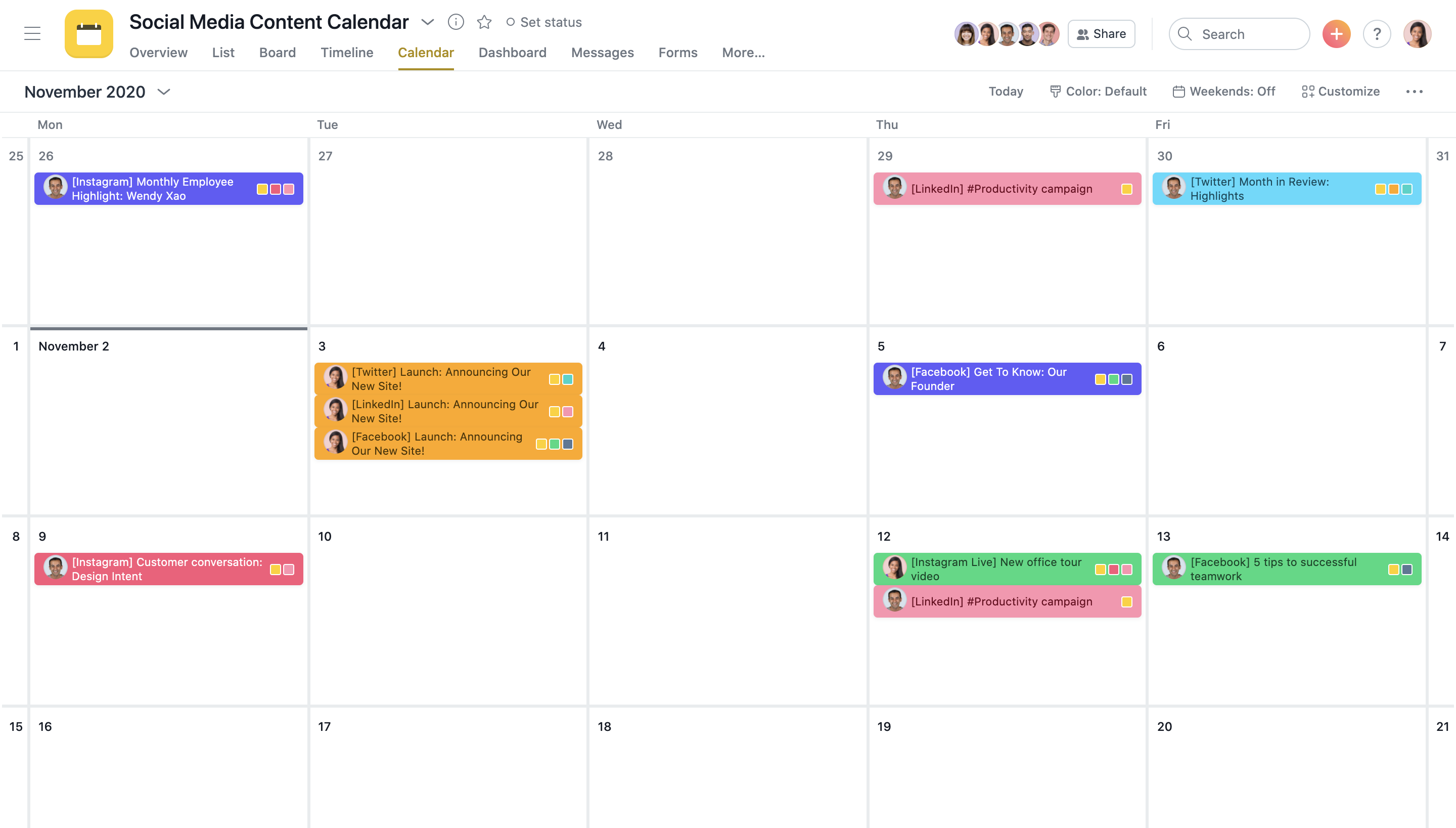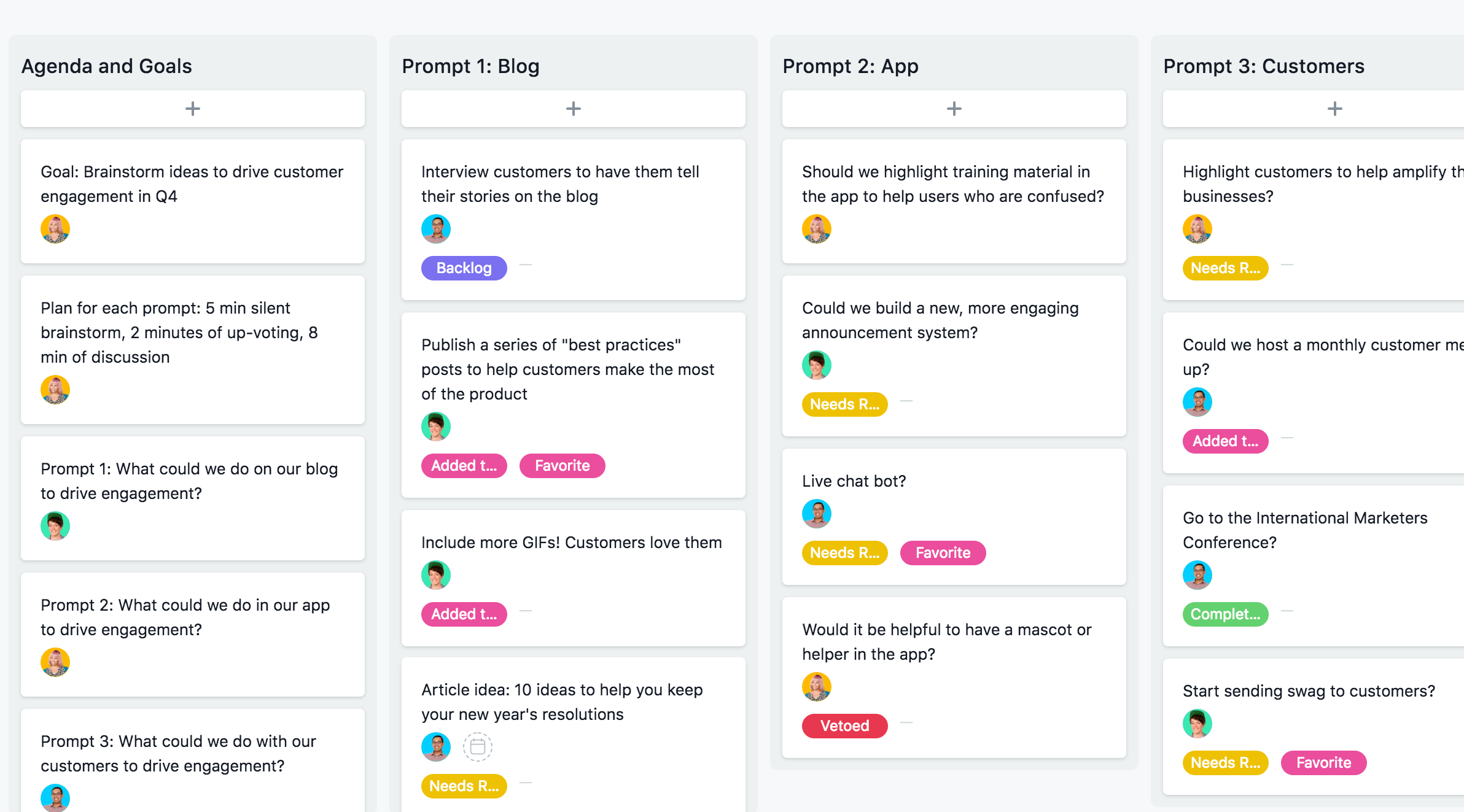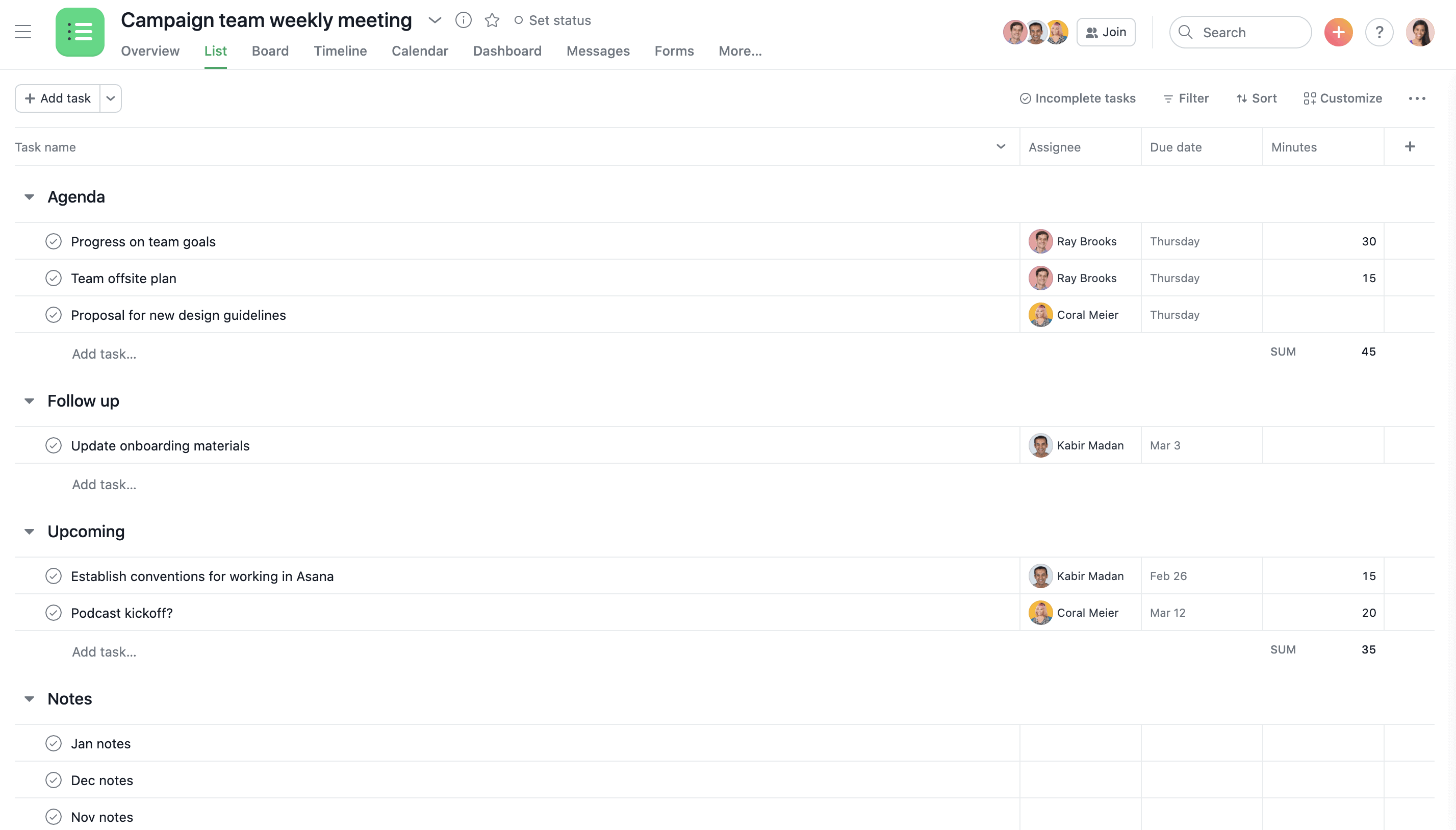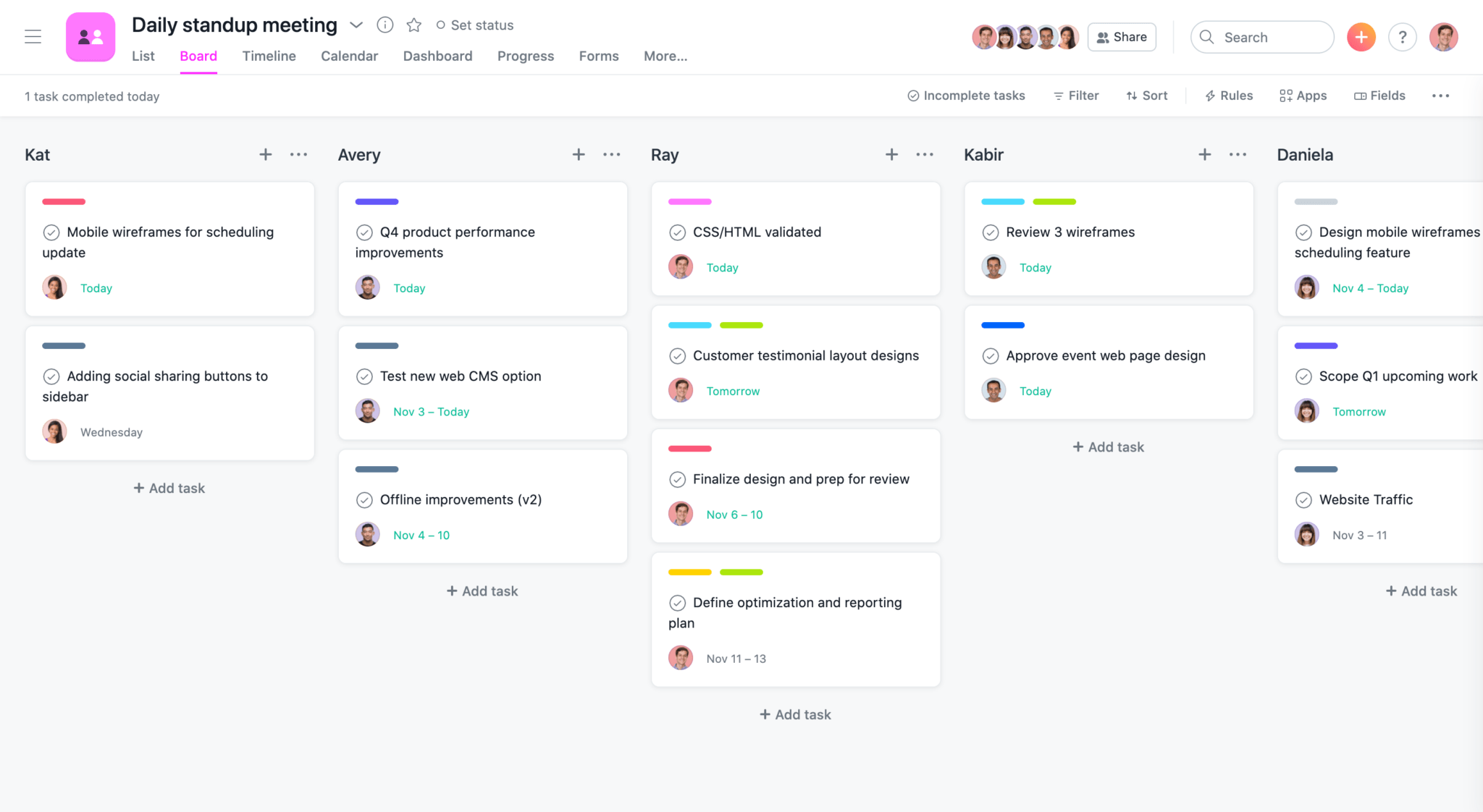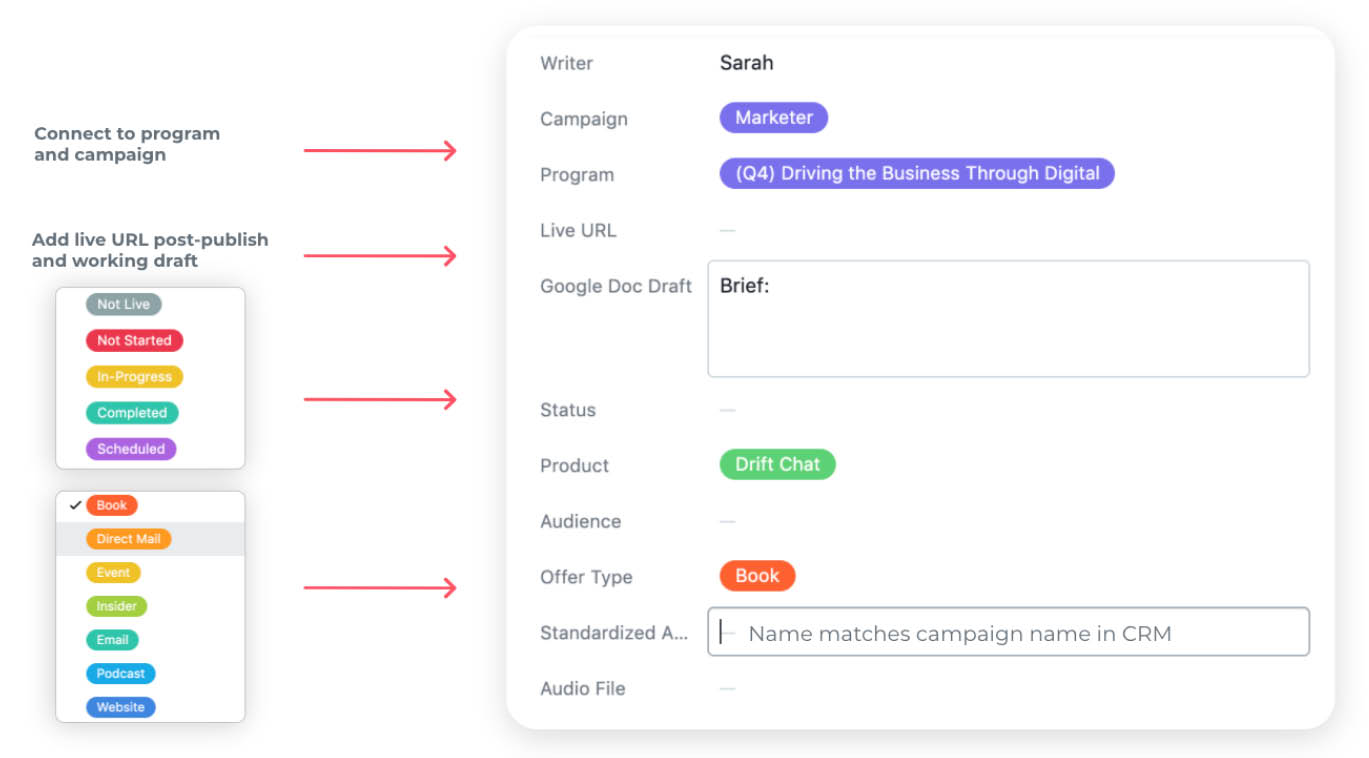How do you go from planning to seamless execution? Cutting down on the “work about work” with centralized integrated campaign management is key.
Whether you’re in office, working from home, or coordinating with teams around the globe, for a truly integrated marketing campaign you need work management.
What is Work Management?
Work management is a systematic approach to organizing a company’s workflows – like projects, ongoing processes, or routine tasks. It’s about coordinating people and work across all levels of an organization, ensuring everyone has the information they need to tackle the work that matters most. Sounds like it was made for integrated marketing campaigns, right?
To implement a work management system, most organizations use a work management tool, like Asana, which becomes the single source of truth for everyone involved in the campaign – from adjusting timelines to assigning project managers to sharing work.
Although tasks like checking email and searching for documents may seem like small annoyances, they actually cut into a lot of your team’s time. This significantly hampers their ability to produce meaningful work without stress. As mentioned earlier, respondents in Asana’s Anatomy of Work Index spend around 60% of their time on busy work (i.e., unnecessary meetings and status checks). That leaves only 26% of their time left for skilled work – like running a webinar or writing an eBook – and only 14% of their time for strategy.
Plus, with the sudden rise of distributed work in 2020, respondents shared that a quarter of deadlines were missed, and 87% of knowledge workers reported working late to make up the difference. Something’s got to give if teams are going to stay motivated, happy, and productive.
Keep Your Integrated Campaign on Track with a Work Management Tool
Once you and your team have finished the campaign planning, it’s time to create step-by-step processes in your work management tool. Work management tools, like Asana, provide greater transparency and accountability around projects and deadlines.

Create Accountability Across Campaigns
Integrated marketing campaigns are a team effort. This is especially true when a team is remote or distributed across offices. For example, when you run a demand generation campaign with multiple offers, like an ebook, webinar, and blog post, you need several specialists to help execute, from content marketers to campaign managers.
When everyone is working out of the same single source of truth, it’s easy to track who is doing what and by when. To create accountability across a campaign, assign tasks with owners and due dates. Clear responsibilities and deadlines help people stay on top of their own work, eliminate duplication, and allow everyone to move faster in the same direction.
Stay on Schedule with Clear Timelines
Try as you might to keep multiple integrated marketing campaigns on schedule, things don’t always go according to plan.
When this happens you need a way to pinpoint overdue work across all of your campaigns so you can quickly follow-up with collaborators and adjust schedules accordingly. For example, when you’re working on an ebook, if the copy isn’t finished on time, the design team’s timeline will have to change.
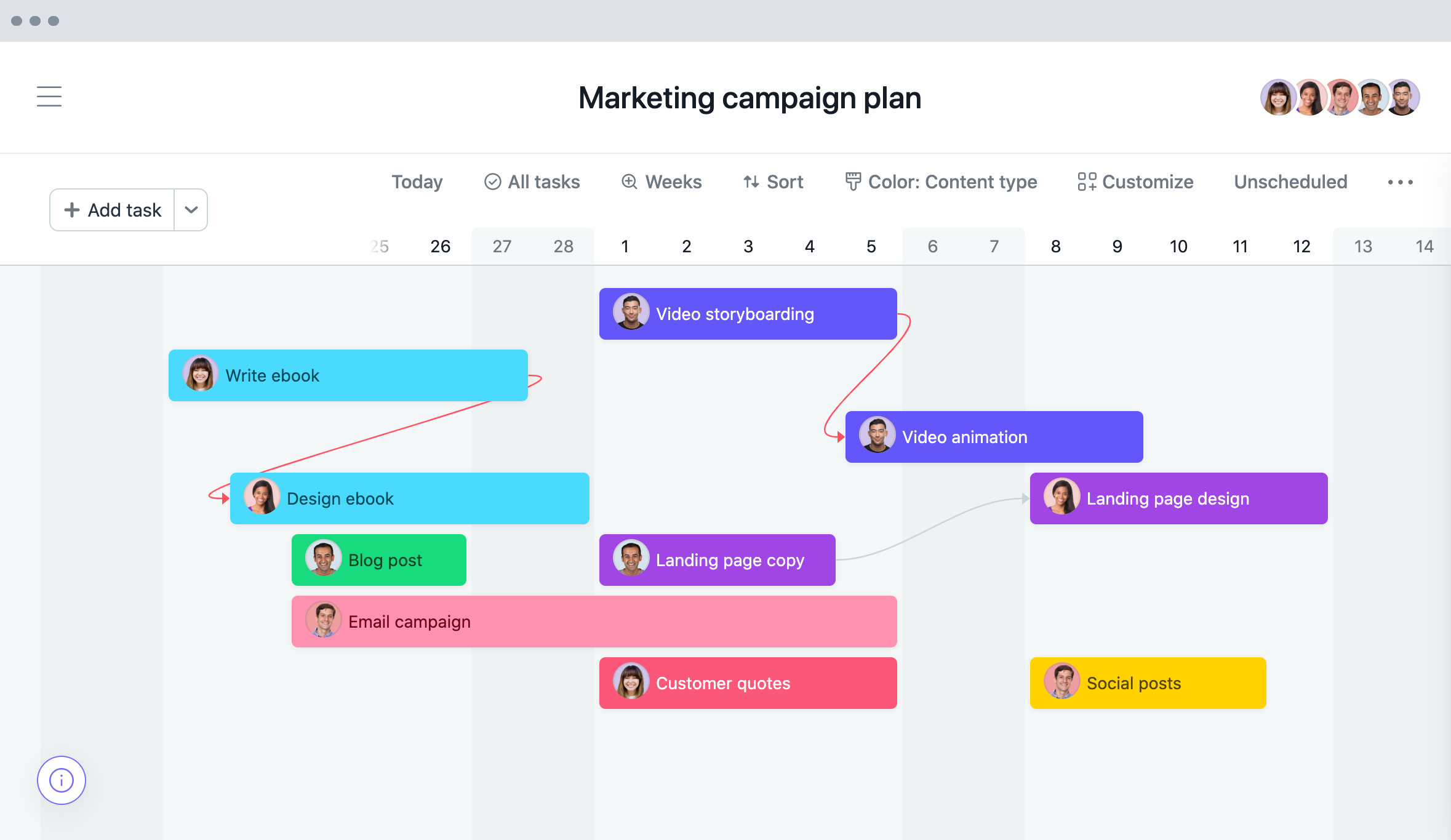
With a work management tool, you can easily get a bird’s-eye view of all tasks and zoom into those that are incomplete or past due. From there, you can click into each task to ping the assignee for an update. A timeline view is especially useful to see how due dates align – or don’t – so you can act accordingly.
Cut Down on Email with Regular Status Updates
Campaigns have a lot of moving pieces. And stakeholders like to keep tabs on how projects are going. Instead of providing status updates to individual team members through email, we recommend publishing weekly or bi-weekly status updates in your work management tool.
Keeping progress updates centralized in a work management tool allows you to proactively flag at-risk or blocked work before it affects deadlines. You can also highlight recently accomplished milestones, and add links to resources or new documents. And because your stakeholders are already project members, publishing an update will automatically notify all of them at once.
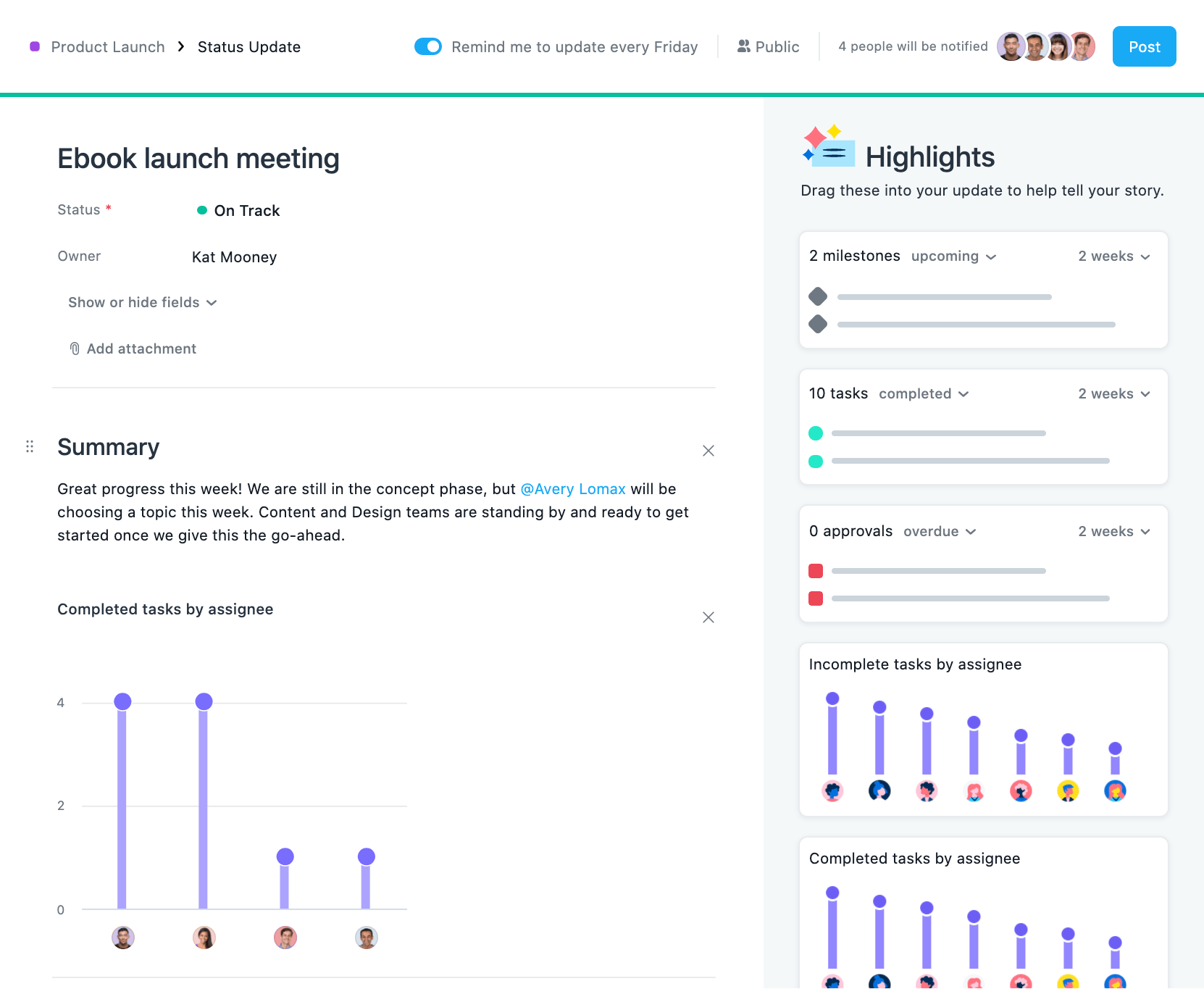
Monitor Multiple Integrated Marketing Campaigns in a Central Portfolio
When planning multiple integrated marketing campaigns, you need a way to stay on top of status updates. Instead of calling for endless check-ins or guessing how work is progressing across all of your projects, we recommend creating a central portfolio in your work management tool to monitor all of your team’s campaigns in one place. Portfolios offer a high-level view of each campaign’s progress, recent status updates, and your team’s bandwidth – all in real-time.
Work management tools are helping teams everywhere work better together. But how can you track progress and performance across campaigns post-launch?
Create Reporting Consistency with an Integrated Marketing Campaign & UTM Builder
Nothing is more frustrating than opening up Salesforce and seeing 10 different naming conventions for the same piece of content.
At the very least, this kind of poor housekeeping results in inaccurate reporting. At worst, it hurts your long-term marketing strategy. To avoid this, you need to standardize naming for campaigns, programs, and offers in your CRM. (We can hear your marketing ops team cheering now.)

When naming your integrated marketing campaigns, use a format that identifies key information quickly. For example, your naming convention could include the following:
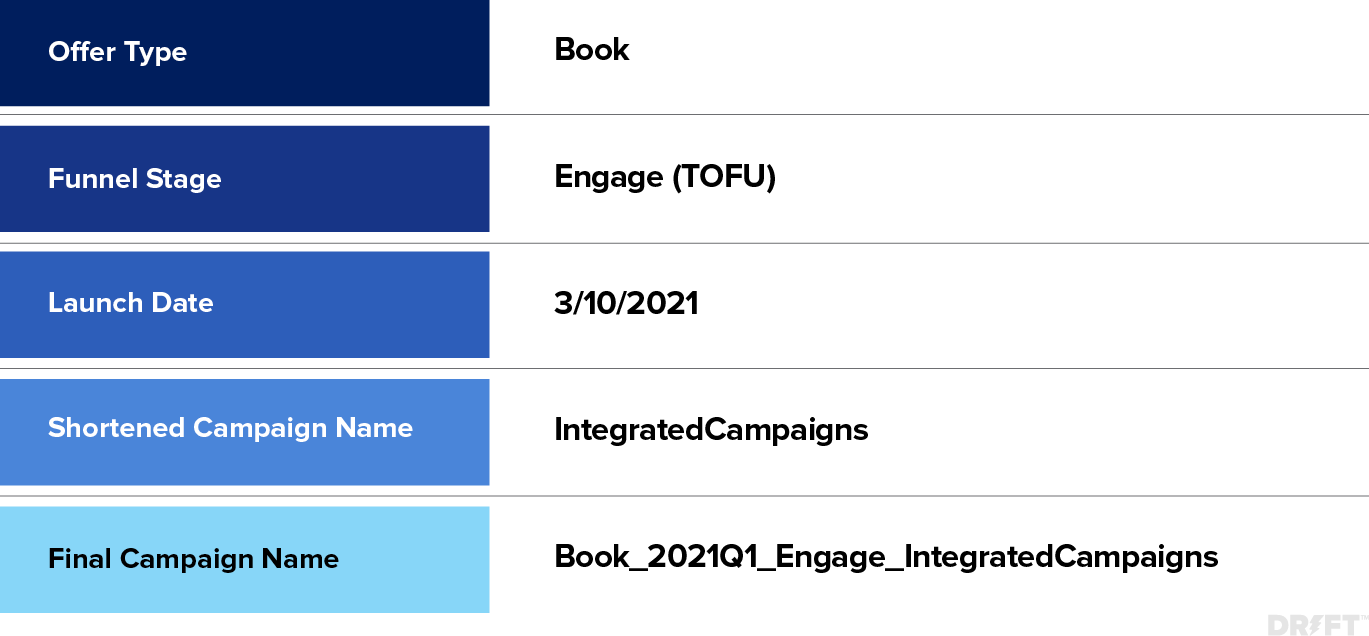
Once you have your naming conventions down, marketers should use Urchin Tracking Module (UTM) tracking links across channels. UTMs track the clicks and performance of offers across five different parameters: traffic source (i.e., utm_source), medium, campaign (i.e., utm_IntegratedCampaigns), content, and keyword terms.
There are several websites you can use to build UTM tracking links. Though we suggest creating your own UTM and campaign builder.
Feeling organized yet? We hope so. So far you’ve learned how your team can operationalize and transition marketing activities into a work management system. Now, it’s time to go one level deeper and start creating your own templates.
